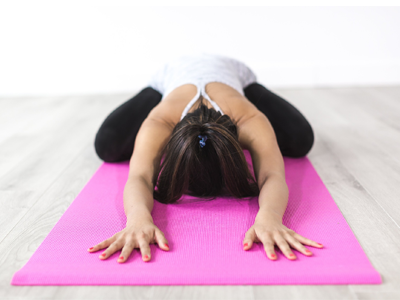Resilience is an essential life-skill; it enables us to cope with and recover from life’s misfortunes and challenges. Most people will experience an accumulation of loss, trauma, transition and heartbreak, along with joy, love and pleasure in their lives.
Practiced regularly, yoga builds strength, flexibility, balance, calm, optimism, and above all, resilience. Compare the oak and the willow; who survives the storm – the mighty oak, or the bendy willow? The willow withstands hurricanes because, unlike the oak, it flexes with and spills the wind, rather than struggling against it. Humans can withstand adverse conditions too, if they learn to let go of much of the struggle and accept what is. Yoga teaches us to let go on all levels.
This flexibility is about survival, and can bring transformation too, with the realization that there’s a part of us that is indestructible, a light within that always shines.
We carry our emotional wounds in our muscles and cells, and unresolved or repressed feelings such as anger, resentment, grief, guilt and shame become our emotional baggage. The accumulation of this negative energy can result in pain, fatigue, and illness, affecting us not only physically, but also mentally, emotionally and spiritually.
These “issues in our tissues” have tremendous emotional energy. When these emotions are expressed, stuck energy flows again and vitality returns. Yoga enables this gentle, safe release through appropriate practice. Chronic conditions can often be helped by learning new ways of moving and breathing, and accepting what can’t be changed.
A good yoga session will almost always include a combination of asanas (postures), pranayama (breath awareness), savasana (deep relaxation) and yoga nidra (yogic sleep), and sometimes meditation. This style of yoga is classical hatha yoga, also known as integral yoga, as it integrates all of these aspects.
Using these techniques, yoga re-aligns the body structurally and energetically, restores balance to the autonomic nervous system, deepens and regulates the breath, massages the internal organs, stretches the muscles, opens the joints and the heart, and quiets the monkey mind. Learning techniques for active, deep relaxation are an essential part of yoga; with complete focus, and without distractions, we can consciously release all tension and find that peace within.
Many people around the world are familiar with the gifts of yoga; there are also many who have tried yoga but felt no benefit, because the class was too difficult, or the teacher lacked the skill and experience to address the student’s specific needs.
One size does not fit all – effective Yoga practice is ideally tailored for each individual. A good yoga teacher will devise a program that is appropriate for you, so small classes are recommended, as individual attention is impossible in a large general class.
Traditionally, yoga was taught on an individual basis, so the student’s unique combination of fitness level, motivation, age, discipline and time to devote to practice were all taken into account. This approach is still possible today with one to one tuition, and via small classes.



